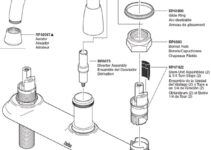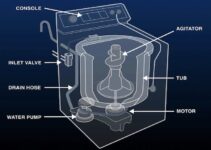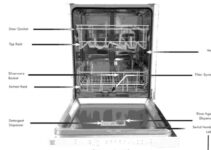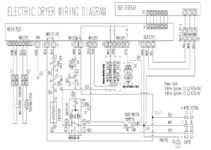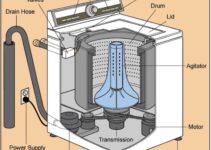The Frigidaire ice maker is a portable ice machine that helps you make ice wherever you go. Ice makers in refrigerators are great and sufficient for home use if you don’t need much ice.
However, if you need large amounts of ice in your office or when you go camping, then a portable ice maker like the Frigidaire stainless steel ice maker is an excellent option for you.
In this article, we will look at the wiring diagram of a typical Frigidaire ice maker and study the simple components that make it work perfectly.
Frigidaire Ice Maker Wiring Diagram
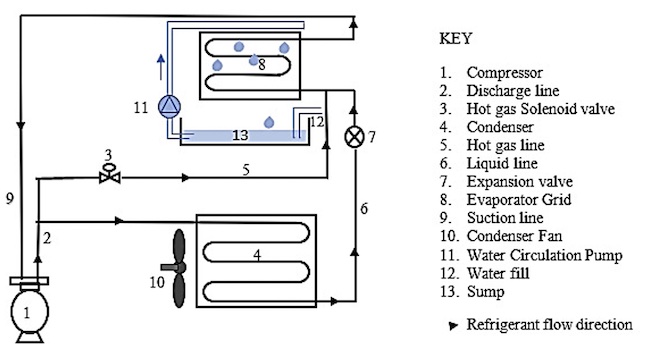
Frigidaire Ice Maker Components Explained
Many people are used to the typical ice-making method — using an ice tray. The ice tray typically has molds you fill with water before putting it in a freezer. When the water becomes ice, you remove the tray from the freezer and extract the ice.
Ice makers work the same way. The only difference is that this process is automated in the ice maker, so you only need minimal human effort. All you need to do is fill the ice maker with water, and it’ll produce hundreds of ice in a short period.
A few essential components make this process possible in the Frigidaire ice maker. Let us go through these components and their importance in the cycle.
Water Inlet Solenoid Valve
The solenoid valve is an essential component found in every HVAC system. Like any other valve, it opens and closes to allow the flow of fluids in the system. However, it uses a solenoid, which is a coil of wire.
When you pass electricity through a coil of wire, you generate an electromagnetic field in the coil. The valve actuator is connected to the solenoid coil, so when the coil is energized, the valve will open and allow water to flow to the ice mold.
In the Frigidaire ice maker, you can find the water inlet solenoid valve at the beginning of every ice-making process. When you turn on the ice maker, the microcontroller sends a signal to the solenoid valve to open for a few seconds and allow water to pass through to the ice mold.
After the water passes to the ice mold, the valve closes for a while to give the mold time to freeze the water. When sufficient time has passed, the ice mold will release the ice blocks into an ice tray, and the solenoid valve will be opened again for more water to be sent to the ice mold.
Compressor
The compressor’s job is to transfer the refrigerant around the ice maker. A refrigerant is a fluid that can change states between liquid and gas quickly to absorb and give away heat when needed.
Evaporator
The evaporator helps freeze the water by absorbing the heat and using it to boil the refrigerant. The refrigerant turns into vapor at this temperature until it goes into the condenser, radiating heat and turning into a liquid again.
The condenser feeds this liquid back into the expansion valve and then the evaporator, and the process happens again.
Condenser
The condenser helps cool the refrigerant before it sends it back to the evaporator.
Expansion Valve
You can find the expansion valve before the evaporator in the Frigidaire ice maker. The job of this valve is to control the pressure of the refrigerant. The refrigerant is often in a liquid state when it leaves the condenser, so the expansion valve reduces its pressure.
This low-pressure refrigerant slowly turns to vapor, and the heat absorbed by the evaporator increases its temperature. The expansion valve expands and contracts with an increase and decrease in the temperature of the refrigerant.
Microcontroller
Although this controller is not often visible on schematic diagrams, it is probably the most essential part of the ice maker. Remember when we said the Frigidaire ice maker used an automated process to make the ice block? The microcontroller acts as the brain behind this automation.
It tells the solenoid valve to open and allow water to enter the ice mold. It also receives a signal to know when the ice mold has started freezing and starts to time the ice-making cycle. After the ice-making cycle is complete, the microcontroller begins the harvest cycle.
Also, when too many ice blocks are in the bin, the microcontroller receives a signal. This way, it can flash an indicator to tell you to offload the bin. It also flashes an indicator that tells you when the water is too low so that you can add more water for the ice-making cycle.
While these components are not the only ones in the Frigidaire ice maker, they are the major ones worth remembering. Every other component works to assist these major ones.
If any of them gets faulty, it would be impossible to use your ice maker smoothly, and you would need to call a specialist to deal with it.
